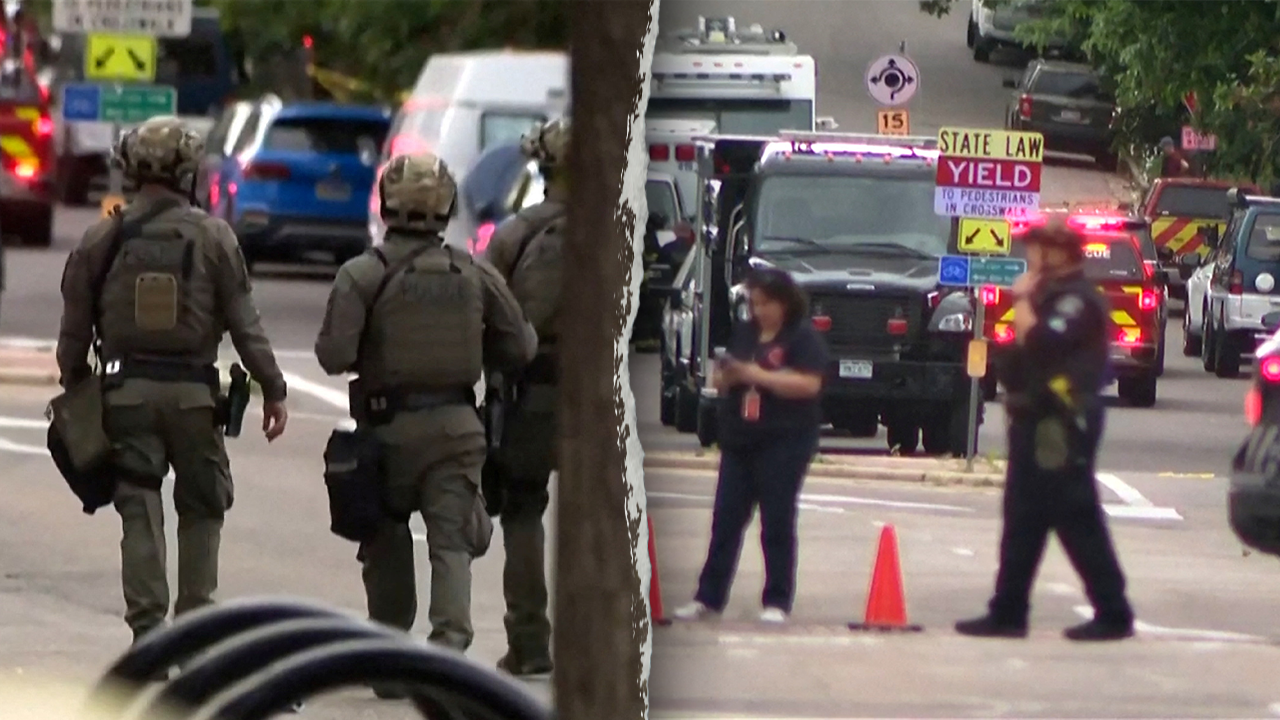Nevada
OPINION: It’s time for the Biden administration to designate Nevada’s newest monument – The Nevada Independent

The push to preserve a grove of sacred swamp cedar trees and commemorate the site of several massacres perpetrated against Indigenous communities in eastern Nevada reached a new milestone last month. Sen. Catherine Cortez Masto (D-NV) introduced legislation to establish Bahsahwahbee National Monument in Congress on July 29. The legislation is a long-awaited accomplishment for the Bahsahwahbee campaign, and brings the sacred landscape one step closer to permanent protection.
With Congress unlikely to act this year, the campaign is calling on President Joe Biden to use the Antiquities Act to designate the area a national monument. Drawing on his extensive Senate experience, Biden has traditionally awaited the introduction of legislation before using this authority to establish national monuments.
The Duckwater Shoshone Tribe, Ely Shoshone Tribe and Confederated Tribes of the Goshute have been advocating for Bahsahwahbee to become Nevada’s newest National Park Service-managed monument for years. Situated 8 miles north of Great Basin National Park, the soon-to-be Bahsahwahbee National Monument would benefit all Nevadans. Safeguarding public lands not only shields us from the most severe effects of climate change but also preserves the unique characteristics that define our state for future generations.
A poll of 602 Nevadans conducted last year reported that 77 percent of respondents support the tribes’ efforts to designate Bahsahwahbee. In 2021, the Nevada Legislature passed a resolution supporting the designation, including unanimous bipartisan support in the state Senate. The tribes are asking for the National Park Service to tell their story — a story of deep connection to the land, tragedy and resiliency.
Nevadans have shown how much they value public land and its protection. Nevada has the highest percentage of public land of any state in the nation. Conservation is part of the culture across the state, transcending party lines and rural-urban divides. Nevadans are more likely to support candidates that protect public lands, and invest in national parks and monuments. Nevada is also the ancestral home of 21 federally recognized tribes spanning 28 reservations, with Indigenous people inhabiting the Great Basin since time immemorial. Thanks to recent efforts to expand voting access, issues important to Native communities matter more than ever in determining our elections.
Intact wetlands and forests such those found at Bahsahwahbee continue to sequester carbon and protect climate-cooling biodiversity, fighting climate changes that have led to Reno and Las Vegas being named the two fastest warming cities in the country. This summer is shaping up to be the hottest on record in Nevada. Indigenous communities have known for millennia what others are only starting to reckon with: Land protection and community protection are inextricably linked.
Nevada, holding true to its purple nature, is projected to be one of the key states that will determine the results of the presidential election and if the Democratic majority in the Senate holds. Registered Independents in Nevada now outnumber registered Democrats and registered Republicans. Polls have shown that 72 percent of Nevadans believe that public land protection benefits our economy, and 78 percent of Independent voters (joined by 73 percent of GOP and 80 percent of Democratic Party voters) believe that conservation is important in selecting a candidate to vote for. All the signs point toward public lands and conservation efforts being a deciding factor in how Nevadans vote this November.
Bahsahwahbee becoming Nevada’s newest National Park Service-administered national monument is not narrowly a conservation issue for eastern Nevada, but one that impacts all Nevadans. The ball is in your court, President Biden.
Olivia Tanager is the director for the Toiyabe Chapter of the Sierra Club, focusing on Nevada, the Tahoe Basin and the eastern Sierra Nevada. It is a grassroots fueled group that advocates for increased access to renewable energy, public transportation and land, water and wildlife conservation.
The Nevada Independent welcomes informed, cogent rebuttals to opinion pieces such as this. Send them to [email protected].

Nevada
Former Nevada Lieutenant Governor Kate Marshall announces run for Reno Mayor

RENO, Nev. (KOLO) – Kate Marshall may be most recognizable as Nevada’s Lieutenant Governor where she presided over the state senate, or as Nevada’s Treasurer.
All elected positions and those that required leadership.
“How can we find solutions to real problems,” says Marshall when asked about the Reno Mayor post. “And quite frankly that’s the mayor’s job. Mayors are where the rubber meets the road.”
Marshall says Reno is a great place to live.
Which is why people have moved here.
But that has meant growth and other problems directly and indirectly.
“Talk about childcare,” says Marshall about one of her priorities should she win office. “I can’t say to a teacher or nurse not only can’t you afford to live here but good luck getting childcare. Quite frankly it is unacceptable to say to a firefighter gosh I need you to come here and work here. I need you to keep our community safe. We are going to start you off at $67,000 a year. But you are not going to be able to live here.”
Marshall says any decisions she makes as mayor will revolve around what is best for Reno residents.
She says those decisions will be based on questions she asks.
“What can I do that’s the next best thing for the people of Reno,” says Marshall. “You have to put the people of Reno, they are, we are front and center. And then you are going to move from there. And then you are going to build consensus and listen to the other members of the council. It is something that I have to do in every job I’ve been in; that was getting to yes.”
She says the city’s budget is in crisis. But she’s dealt with that before.
She was Nevada State Treasurer during the “Great Recession.”
“One of the things I did was go to the Wall Street Banks clawed back $50,000,000 in Nevada taxpayer money,” says Marshall. “I’m going to tell people. Here is how I do things. Here is my experience. And I am going to work really, really, hard to earn your support.”
Marshall will announce her candidacy officially for Reno Mayor on June 10th, 2025. She won’t be alone.
Last time the mayor’s race had 19 candidates during the primary.
Copyright 2025 KOLO. All rights reserved.
Nevada
ICE Detains TikTok's Biggest Star in Nevada

The world’s most popular TikToker was detained in Nevada by Immigration and Customs Enforcement on Friday. After a social media influencer broke the news on X that Khaby Lame had been detained by ICE, the agency confirmed the news in a statement to AFP and Men’s Journal. “US Immigration and Customs Enforcement detained Seringe Khabane Lame, 25, a citizen of Italy, June 6, at the Harry Reid International Airport, Las Vegas, Nevada for immigration violations,” it reads. “Lame entered the United States April 30 and overstayed the terms of his visa. Lame was granted voluntary departure June 6 and has since departed the US.”
Lame, who shot to fame making silent comedy videos on TikTok after losing his job at a factory in Italy amid the COVID-19 pandemic, has posted on both TikTok and Instagram since his brief detention, though he did not address the situation. It’s not clear where he traveled after leaving Las Vegas. The X influencer who first reported news of Lame’s detention claims to be the person who reported him to authorities. He also posted, “If you discover any illegal aliens or illegal activity, contact ICE’s Tip Line.” Lame has more than 162 million followers on TikTok. (More Immigration and Customs Enforcement stories.)
Nevada
2025 Nevada Preps All-Southern Nevada boys volleyball team revealed

First team
Regi Beshiri, Sierra Vista — The senior and first-team Class 5A all-state selection led the state with 495 kills and added 251 digs.
Dexter Brimhall, Coronado — The senior and first-team 5A all-state selection recorded 324 kills, 242 digs and 38 aces for the 5A state champion.
Dane Galvin, Coronado — The senior recorded 306 kills and 151 digs for the 5A state champion
Ty Hardy, Basic — The junior, the 4A Sky League and state player of the year, had 312 kills and 272 digs for the 4A state champion.
Dylan Ho, Palo Verde — The senior and first-team 5A all-state selection had 135 kills for the 5A state runner-up.
Porter Hughes, Basic — The junior first-team 4A all-state selection had 327 kills, 198 digs and 40 aces to lead the Wolves to their second straight 4A state title.
Kingston Jerome, Shadow Ridge — The senior, the 5A state and Desert League player of the year, recorded a .399 hitting percentage with 161 kills, 102 blocks and 55 aces.
Lincoln Larson, Centennial — The junior led the state with 99 aces and added 370 kills, 175 digs and 47 blocks.
Deacon Menlove, Coronado — The senior and first-team 5A all-state selection was fourth in the state with 388 digs for the 5A state champion.
Eli Nelson, Palo Verde — The senior and first-team 5A all-state selection recorded 99 kills for the 5A state runner-up.
Owen Romzek, Shadow Ridge — The senior and first-team 5A all-state selection was fifth in the state with 95 blocks for the Desert League champion.
Braxton Rowley, Coronado — The senior and 5A Mountain League player of the year was second in the state with 836 assists and added 212 digs, 63 blocks and 40 aces for the 5A state champion.
Coach of the year
Jazlynn Mau, Coronado — The first-year coach led the Cougars to a 38-2 record and the 5A state title.
Second team
Luke Dennett, Basic — The senior and first-team 4A all-state selection had 564 assists and 103 digs for the 4A state champion.
Ridge Gardner, Centennial — The senior and second-team 5A all-state selection had 164 kills and a .322 hitting percentage.
David Haldeman, Arbor View — The senior and second-team 5A all-state selection had 125 digs and 578 assists.
Reece Leavitt, Virgin Valley — The senior led the 3A state champion with 63 blocks and added 308 digs, 235 kills and 47 aces.
Zion Moore, Shadow Ridge — The junior and second-team 5A all-state selection recorded 217 kills and 157 digs.
Zechariah Nissley, Green Valley — The senior and second-team 5A all-state selection had 233 digs, 163 kills and 300 assists.
Gage Poulsen, Sky Pointe — The senior and first-team 4A all-state selection had 519 assists, 132 digs, 56 aces and a .375 hitting percentage.
Yeheshua Ruiz, Foothill — The junior and second-team 5A all-state selection was third in the state with a .418 hitting percentage and added 180 kills and 70 blocks.
Destry Tobler, Virgin Valley — The senior led the 3A state champion with 345 kills and 58 aces and added 191 digs.
Dyson Twitchell, Sky Pointe — The senior and first-team 4A all-state selection had 266 kills and 132 digs.
Kenyon Wickliffe, Arbor View — The junior and second-team 5A all-state selection had 135 kills.
David Zwahlen, Boulder City — The junior and 3A Mountain League player of the year recorded 183 kills, 54 aces and 302 digs.
Honorable mention
Carter Aldridge, Desert Oasis
Jaeden Alexander, Del Sol
Jacob Bay, Legacy
Jack Cox, Durango
David Davila-Matamoros, Green Valley
Dylan Domine, Liberty
Logan Hanshew, Legacy
Matthew Hill, Valley
Kaleb Law, Mojave
Tautai Malauulu, Del Sol
Ellis McGrath, Desert Oasis
Isaiah Moore, Legacy
Jordan Pierce, Chaparral
Levi Randall, Boulder City
Clayton Sellers, Valley
Izaeya Tili, Chaparral
Austen Tippetts, Sky Pointe
Aiden Tran, Bishop Gorman
AJ Tuitele, Mojave
Daniel Vargas, Cimarron-Memorial
Luke Wilkinson, Coronado
Contact Alex Wright at awright@reviewjournal.com. Follow @AlexWright1028 on X.
-

 Politics1 week ago
Politics1 week agoMichelle Obama facing backlash over claim about women's reproductive health
-

 West3 days ago
West3 days agoBattle over Space Command HQ location heats up as lawmakers press new Air Force secretary
-

 Finance1 week ago
Finance1 week agoHere's what will boost your feeling of financial well-being the most, researchers say
-

 Technology1 week ago
Technology1 week agoWhy do SpaceX rockets keep exploding?
-

 World1 week ago
World1 week agoTwo killed in Russian attacks on Ukraine before possible talks in Turkiye
-

 Kentucky1 week ago
Kentucky1 week agoHow Ole Miss baseball’s pitching options will factor in elimination game vs Western Kentucky
-

 World1 week ago
World1 week agoNcuti Gatwa Bids Doctor Who Farewell as Finale Ends With a Most Surprising Twist — Grade It!
-

 News1 week ago
News1 week agoTrump administration continues to target international students. What to know and what could be next.















